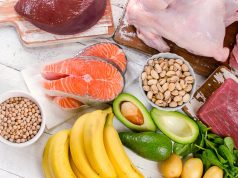Embarking on a plant-based diet journey can be both an exciting and daunting endeavor. Whether you’re motivated by health reasons, environmental concerns, or a love for animals, transitioning to a plant-based lifestyle is a commendable choice that can bring numerous benefits to your well-being and the planet. However, like any significant lifestyle change, it comes with its own set of challenges and learning curves. In this guide, we’ll explore the best tips for successfully adopting and thriving on a plant-based diet. With empathy and understanding, we aim to support you in making this transition as smooth and enjoyable as possible, ensuring that you feel empowered and informed every step of the way. Whether you’re a seasoned vegan or a curious newcomer, these insights will help you navigate your plant-based path with confidence and ease.
Understanding Nutritional Balance in Plant-Based Eating
Achieving a nutritional balance in a plant-based diet requires thoughtful planning and a focus on diversity. It’s essential to include a wide variety of foods to ensure that your body receives all the necessary nutrients. Here are some key components to consider for a balanced diet:
- Proteins: Incorporate a mix of legumes, nuts, seeds, and whole grains. These not only provide protein but also supply essential amino acids.
- Vitamins and Minerals: Leafy greens, fruits, and fortified foods can help meet your vitamin and mineral needs, such as B12, iron, and calcium.
- Healthy Fats: Avocados, olive oil, and flaxseeds are excellent sources of healthy fats, crucial for brain health and hormone production.
To help visualize how these elements can be integrated into daily meals, consider the following sample meal plan:
| Meal | Options |
|---|---|
| Breakfast | Oatmeal with almond milk, chia seeds, and berries |
| Lunch | Quinoa salad with chickpeas, spinach, and a tahini dressing |
| Dinner | Lentil soup with a side of whole-grain bread |
| Snack | Carrot sticks with hummus |
Remember, balance is key. Listening to your body’s needs and making adjustments as necessary will help maintain a healthy plant-based lifestyle. Regularly rotating your food choices ensures a comprehensive intake of nutrients, supporting overall well-being.

Mastering Meal Planning for a Sustainable Diet
Transitioning to a plant-based diet can feel overwhelming, but with a bit of planning, it can be both manageable and enjoyable. Here are some tips to help you embrace this lifestyle with ease:
- Batch Cooking: Spend a few hours each week preparing grains, legumes, and roasted vegetables. This will give you ready-to-eat components for quick meals.
- Embrace Variety: Diversify your plate with different colors and textures. Incorporate leafy greens, root vegetables, and fruits to ensure a balanced nutrient intake.
- Protein Power: Include plant-based proteins like lentils, chickpeas, tofu, and tempeh in your meals. These are not only filling but also rich in essential amino acids.
Here’s a simple table to guide your weekly shopping, ensuring you have all the essentials:
| Category | Items |
|---|---|
| Grains | Quinoa, Brown Rice, Oats |
| Proteins | Chickpeas, Lentils, Tofu |
| Veggies | Spinach, Bell Peppers, Carrots |
| Fruits | Berries, Bananas, Apples |
| Nuts & Seeds | Almonds, Chia Seeds, Walnuts |
Remember, the key to a successful plant-based diet is planning and preparation. This not only saves time but also ensures you have nutritious meals ready to go, reducing the temptation to stray from your dietary goals.

Exploring Delicious and Nutritious Plant-Based Recipes
- Embrace Variety: One of the most exciting aspects of a plant-based diet is the sheer variety of foods available. Explore a colorful array of fruits, vegetables, grains, nuts, and seeds. Not only does this enhance your meals with vibrant flavors and textures, but it also ensures you receive a broad spectrum of nutrients. Incorporate seasonal produce to keep your meals fresh and exciting.
- Balance Your Plate: It’s essential to ensure your meals are balanced to meet your nutritional needs. A well-planned plant-based plate might include a source of protein like lentils or chickpeas, complex carbohydrates such as quinoa or sweet potatoes, and plenty of colorful vegetables. Don’t forget healthy fats like avocado or olive oil to keep you satiated and energized.
| Ingredient | Benefits | Cooking Tip |
|---|---|---|
| Chia Seeds | Rich in Omega-3 and fiber | Use as an egg substitute in baking |
| Quinoa | Complete protein source | Rinse before cooking to remove bitterness |
| Spinach | High in iron and calcium | Sauté with garlic for a quick side dish |
- Stay Informed: As you dive deeper into plant-based eating, educate yourself on the nutritional content of different foods. This knowledge will empower you to make informed choices and tweak your diet to suit your personal health goals. Consider consulting with a nutritionist to ensure you’re meeting your specific dietary needs.
- Experiment with Flavors: Herbs, spices, and natural flavorings can transform your dishes from simple to sensational. Don’t shy away from experimenting with flavors like smoked paprika, nutritional yeast, or fresh herbs like basil and cilantro. These not only enhance taste but also offer additional health benefits.

Overcoming Common Challenges with Empathy and Support
Transitioning to a plant-based diet can be a journey filled with both excitement and hurdles. Understanding the common challenges you may face and addressing them with empathy can make all the difference. It’s important to acknowledge that change can be daunting, but with the right support, it becomes much more manageable.
One of the most common obstacles is finding suitable alternatives for favorite animal-based products. Instead of feeling overwhelmed, approach this challenge with a spirit of exploration. Here are some tips to ease the transition:
- Experiment with plant-based proteins like lentils, chickpeas, and tofu.
- Discover dairy alternatives such as almond milk, oat milk, and cashew cheese.
- Explore new flavors by incorporating a variety of herbs and spices into your meals.
Another challenge is maintaining nutritional balance. It’s essential to ensure you’re getting all the nutrients you need. Consider the following nutritional focus areas:
| Nutrient | Plant-Based Sources |
|---|---|
| Protein | Quinoa, Tempeh, Seitan |
| Iron | Spinach, Lentils, Pumpkin Seeds |
| Calcium | Broccoli, Almonds, Fortified Plant Milks |
Remember, the key to success lies in compassionate self-reflection and understanding that it’s perfectly okay to make gradual changes. Reach out to communities or friends who share similar goals for added support. Embrace each step forward with kindness towards yourself and your journey.








































